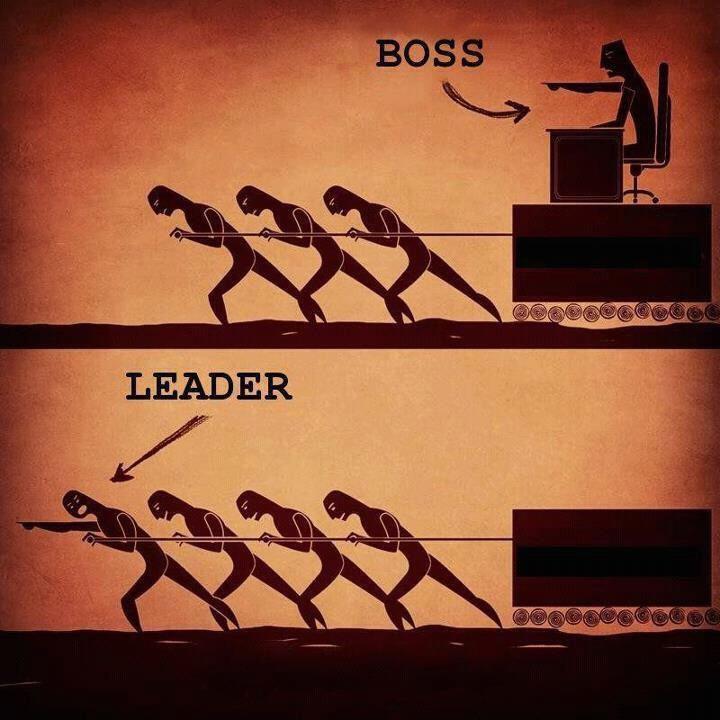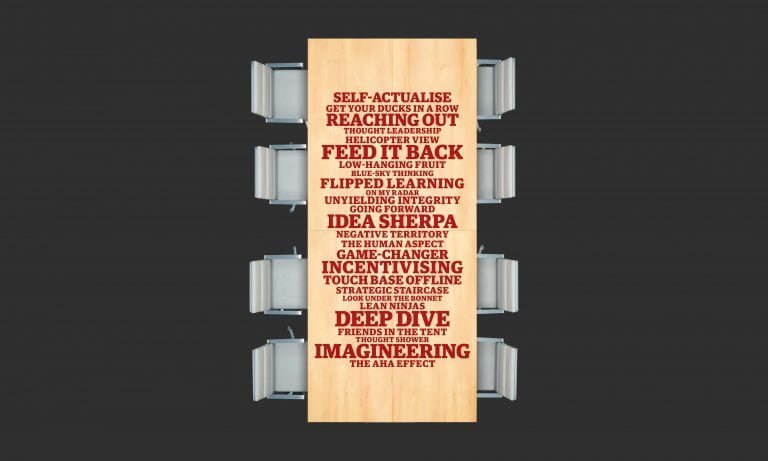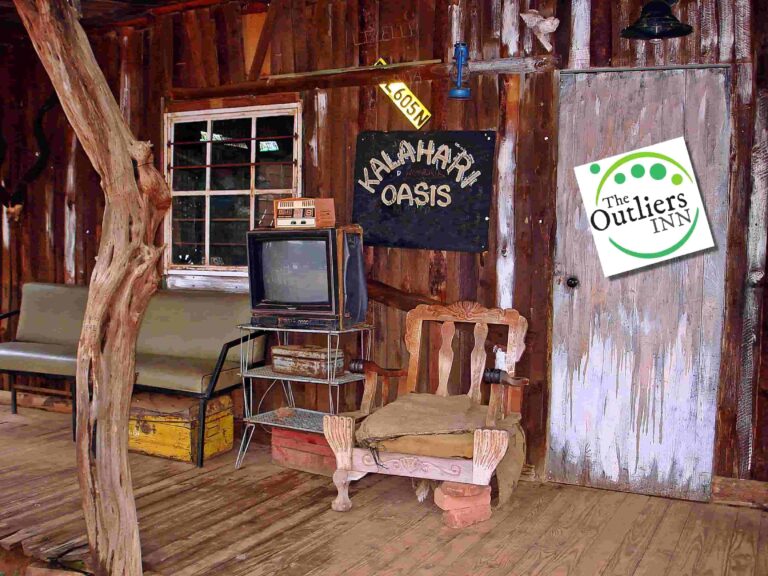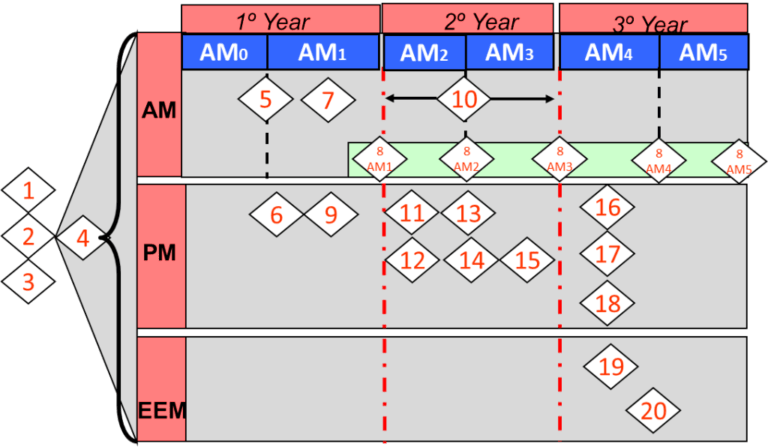Effectiveness of Leadership
I have owned my own business since 1985, so I have been a leader far longer than I have been led. In fact, I have owned my own businesses for so long (thirty-years this year) that I have often been referred to as “uniquely unemployable”. I am not certain I would agree though, because I truly enjoy following a leader I admire and respect – and one who inspires me; even though I don’t expect that we will always agree with an assessment of a situation or a course of action. I probably evaluate a leader and their leadership skills on the “macro-level” rather than on a “micro-level”. “Big Picture” stuff…
Past Employment
My leadership “influencers” started when I was young. When I was only 13 years old, I won my first job at Nanticoke Gardens, a plant nursery and greenhouse, whose founder and owner was Donald “Don” Ferguson (since retired). Don was a graduate of Cornell University with a degree in Horticulture and was well known for his Geraniums. He was a quiet and simple man who demanded quite a bit from a 13 year old. I had to paint, take care of the facilities, move plants about, repot – all the things that you would expect to have to do at a nursery. But he asked in a “matter of fact” manner; never getting excited, offering instruction and guidance as necessary – and always prompt in paying me my wages.
After my season at Nanticoke Gardens, I held jobs as a newspaper carrier for the Evening Press in Binghamton, dishwasher at Sambo’s, worked the kitchen at McDonald’s, worked retail at Sugarman’s and Kay-Bee Toys, and was a photo-lab technician at Snappers. In none of them did I have a manager I would call a leader. I had found a job, not inspiration – fair enough.
My first job where I had a leader as a manager was as a retail clerk at Radio Shack, and his name was Rick Burd. I was hired during the Holiday Season (and stayed-on afterwards) and as you can imagine, the training for this time of year was very “trial by fire”. During the shift, there was not a lot of time devoted to training, it was all about helping the customer and ringing-up the sales. But after hours, still on the clock, Rick would take the time to help you become a better employee – and that meant to think of ways of helping customers solve their challenges with electronics. In addition to spending time with me to improve my customer and technology skills, one thing I always noticed was that Rick would always pass out the paychecks himself and always said “thank you”. It was a small gesture, but one I noticed.https://state-of-readiness.com/
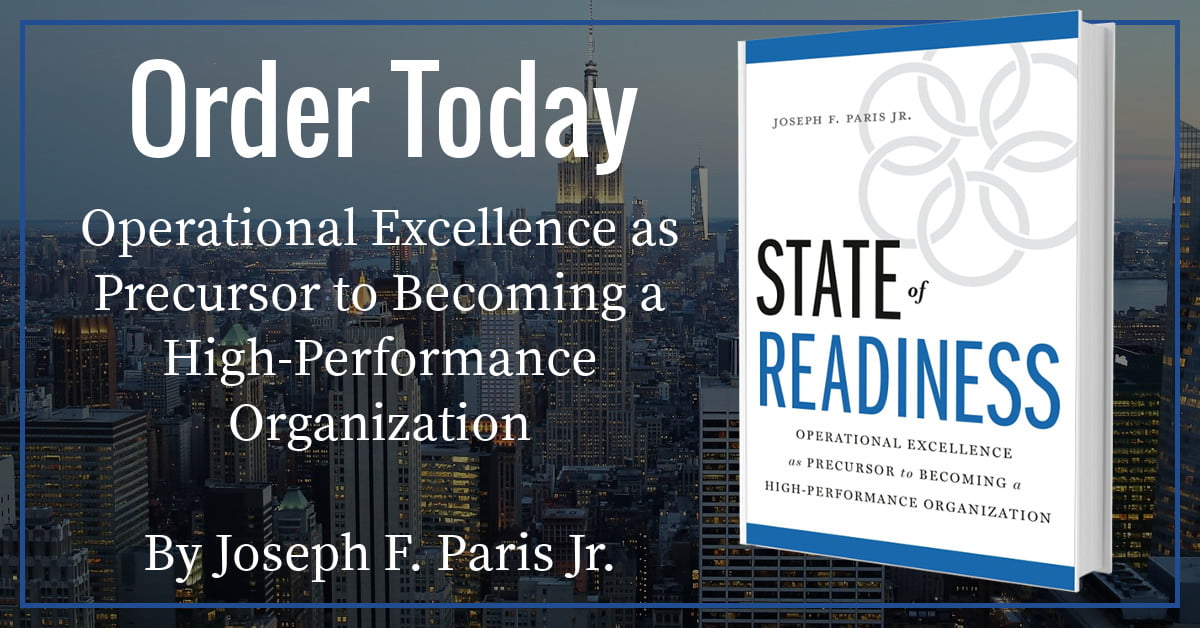
The last job I had before I started my company, XONITEK, was as a retail clerk at the Computer Dome (long since out of business). My experience at Computer Dome was very educational in that they taught me precisely how not to be a leader. The company was founded by a person with more money than brains, and his “professional team” had even fewer brains. He was erratic and unpredictable, he would manipulate paychecks, and he was selling computers one moment and “paraffin heaters” the next (one where you had to light about 25 wicks with a blowtorch). He was so inept that my fledgling company was a vendor to the Computer Dome (how I was able to obtain better vendors than him remains a great unknown). In the end, his money and his brains were at parity.
Technology Vendors
The early incarnation of XONITEK was as a Systems Integrator, selling computers and related peripherals and engineering small business systems. As the technology matured, early Enterprise Resource Planning (ERP) solutions became available – and in 1988, we partnered with Macola Software.
Working with the leadership of Macola in those early days of personal computing was very exciting and pleasurable – everything was new and innovation was the game of the day. It was all about discovering the challenges being faced by businesses, and creating applications to address these challenges – always with an eye to driving value to the customer. If there was a problem with the code, the programmers would have all-night coding sessions fueled by beer and pizza. The mission was to get the problem solved, make the customer happy.
And there was a hyper-active and tight collaboration between the leadership of Macola and the Partner Channel. Our emphasis was always; how can we help our clients? What problems do they have that we can solve? How can we help them become more efficient and their business more successful? We were engineers first and businessmen second – always calculating that the rewards would come if we drove value to our clients. And it worked very well.
The one challenge that Macola had (and it was a major challenge) was that they were late developing and deploying a strategy to address the Y2K bug. And as the year 2000 approached, and without a solution, our existing clients became worried and our value to new clients began to evaporate. The situation was becoming critical.
So we had to find alternative solutions. But the run-up to Y2K also generated a roll-up of ERP solutions, as the larger purchased the smaller. And with this roll-up came a change in the make-up of the leadership of the new companies; they were no longer led by problem-solving engineers, but by financial people who have different priorities. It was no longer about creating a “pull” (where value is recognized and rewarded) but a “push” (of product to meet numbers).
So we had a series of short-term relationships with a series of companies whose emphasis (in my opinion and based on my personal experience) was on “pushing product and making numbers” rather than driving value. These companies included: Baan (imploded due to financial irregularities); Computer Associates (whose “profit over purpose” eventually landed the CEO, Sanjay Kumar, in prison); Navision (acquired by Microsoft who talked a big game but delivering little after we signed-on and invested in training); and Pronto Software (an Australian company who preferred politicking over open engagement).
I could never recall a meeting or conversation with the executives of any of these companies where the emphasis was on the needs of the customer. It was always about; what deals are you going to bring to me (read, “my quota and bonus is at risk”)? What can I do to help you close this month/quarter (read, “discount”)? When there were Reseller Conferences, the only real change year-to-year was “repackaging” their old offerings in “new and improved” packaging (which we all know was really neither) – a mix of pricing changes, bundling, messaging, and branding – and always with a focus on beating the competition instead of benefiting the customer.
Even our long-term ERP Partner, Macola, was acquired by Exact Software in 2001. At the time though, Exact was still led by the founding partners – who were software engineers as well as savvy business people (I actually enjoyed meeting with them on several occasions). So the philosophies and tempo of the relationship – the alignment of our two organizations – did not change much at all. In fact, some of the new offerings that were made available from Exact were quite exciting – and, ironically, were the impetus for XONITEK’s Operational Excellence consulting practice, with an emphasis on the human endeavor over technology.
That is, until the founders decided to begin the process of trying to cash-out by appointing Rajesh Patel as CEO in 2005 and relinquished the daily leadership to others who would be responsible for ensuring that the maximum amount of cash was extracted from the business.
The kerfuffle that ensued (and continues to this day) was the source of much agitation and frustration – and caused the resellers (including XONITEK) to lose a considerable amount of investment (not to mention opportunity) reacting to the direction, redirection, and misdirection of the leadership. Employee turn-over throughout the entire hierarchy of the organization caused further confusion. Service levels to the Customers (resellers and end-users of the software alike) plummeted as Exact placed emphasis on generating cash at all costs over delivering value to the customers – even as the end-users continued to pay “maintenance” and the resellers continued to pay their “partner” fee – for what, I don’t know. Perhaps we received the occasional bug-fix and a new button to push – and many promises.
“Leaders are leaders not by rank, or title, or money. Leaders are leaders because people are willing to follow. And without anyone following, a leader is just a person out for a walk.”
So, as I contemplate all of the business relationships I have had over the years – with employees, customers, and vendors – I begin to think about the “leadership styles” that I have encountered. Which ones served to inspire and cause me to follow – and why? Which ones caused me to be repulsed and why? And which ones made no impression on me at all?
Perhaps it might be appropriate to establish a frame-of-reference, what is a leader?
At the most basic level, a leader is someone who has a vision (a strategy), a commitment to realize that vision, and the ability to assemble a cadre of others in its pursuit.
Therefore, leadership must be the various skills that are necessary for the leader to have in order to motivate and support others so that they are aligned, committed, capable, and motivated to continue in the pursuit of the leader’s vision.
“Leadership is the art of getting someone else to do something you want done because he wants to do it.” – Dwight D. Eisenhower
And leadership style must be the manner(s) in which leadership is performed.
There are many ways in which Leadership styles are presented and explained including the; Blake-Mouton Managerial Grid, Hersey-Blanchard Situational Leadership Theory, the Path-Goal Theory, and several others. Each has its similarities to the others, and each also has its differentiators: pros/cons, strength/weaknesses.
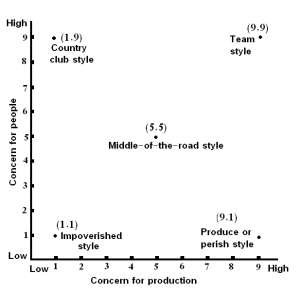
For this article, I will focus on the Blake-Mouton Managerial Grid, developed by Robert Blake and Jane Mouton, and it’s Five Leadership Styles (see chart).
The Leadership Styles are:
1. Indifferent (Impoverished)
2. Accommodating (Country Club)
3. Dictatorial (Produce or Perish)
4. Status Quo (Middle-of-the-Road)
5. Sound (Team-Style)
And, over time, the following styles were added (or at least recognized).
6. Opportunistic
7. Paternalistic
To understand the model, the two axis representing behavioral dimensions are as follows:
- Concern for People: This is the level to which a leader will favor the circumstances and conditions of the people they lead over other considerations.
- Concern for Production: This is the level to which a leader will favor the realization of objectives over other considerations.
And to delve into each of the style a bit further:
- Indifferent (formerly Impoverished) Style (1,1): This style is characterized by dodge and escape. In this style, the leaders (for lack of a better term) have hardly any concern for both people under their leadership or their production. Leaders who use this style are focused on protecting their positions and tightly manage risk and reward – never pushing so as to avoid failure as much as possible.
- Accommodating (formerly Country Club) Style (1,9): This style is characterized by and emphasis on being friends. As such, this style has an emphasis on the concern for people and diminished concern for production. Leaders using this style are focused on creating a sense of security and comfort for the employees with the expectation that this will cause the employees to want to perform well. Although the environment might be friendly, the productivity might not meet the expectations unless the team members are self-motivating.
- Dictatorial (formerly Produce or Perish) Style (9,1): This style is characterized by domination and control. The primary motivation is production and achievement without concern for the people. A dictatorial leader will calculate that the people are being paid to do their bidding and will establish a set of rules for the employees to follow and ensure there is penalties for failing to comply.
- Status Quo (formerly Middle-of-the-Road) Style (5,5): This style is characterized by the leader wanting to maintain harmony within their group and rely heavily on negotiations to reach a consensus. Leaders who try to please all and achieve all usually fail in both – and in this case, neither the needs nor aspirations of the people nor the production goals will be satisfied.
- Sound (formerly Team) Style (9,9): This style is characterized by support and alignment. In this style of leadership, the concern for both the people and their production is high. To achieve this outcome, the leader will invest in building and supporting the people so that they have a sense of ownership with the company and their part – thus creating a feeling of empowerment and motivating them to contribute as stake-holders.
And, over time, the following styles were added (or at least recognized).
- Opportunistic Style: This style is characterized by a focus on the self and the use of manipulation and exploitation as a means to that end. Leaders who use this style have no fixed place on the grid, but rather, their leadership style will be that of a chameleon, adapting to best serve their own interests first.
- Paternalistic Style: This style is characterized by a focus on advising and guiding – but maintaining a strict leader/follower hierarchal structure. Leaders using this style will offer support and show approval – so long as the “student” does not attempt to become the “teacher” and challenge the leader’s supremacy.
Certainly every leader will, at times, use each of these leadership styles. But which style is their natural style? The one they gravitate towards in their “situation normal” state?
The leaders who I met and engaged of the technology companies I listed above, when their organizations were in a state of “maturity” (read, “led by finance and not engineers”), consistently demonstrated a use of the Dictatorial, Opportunistic, and Paternalistic styles and held these as their “natural state”. And since it was obvious to me that they did not care about or otherwise prioritize me or my company (their customer) or their end-users, I didn’t respect them as leaders – and they lost me as a follower.
Self-Reflection
I think about this often. What kind of leader am I? Being on the inside and not being able to see myself from the outside, it’s often hard to tell for certain.
I can certainly read these styles and honestly say I have been each and every one of them from time to time. And I believe that each and every one of them has a set of circumstances when using one over another has its merits and is effective.
If I had to rank them, I believe I am (in order);
1) Sound (Team) Style
2) Accommodating (Country Club) Style
3) Dictatorial (Produce or Perish) Style
I don’t believe I am ever “Status-Quo” (Middle of the Road) or “Indifferent” (Impoverished) as I usually gravitate towards action. I can also see me being “Opportunistic” and “Paternalistic” on occasion, but almost always as a decision based on circumstances and not an instinct.
But as I look behind me, I do see a lot of people following – people who don’t have to follow me. So I can’t be that bad a leader, and my style (or rather, my use of the various styles) must be measured, balanced, and effective.
By Joseph F Paris Jr
Paris is the Founder and Chairman of the XONITEK Group of Companies; an international management consultancy firm specializing in all disciplines related to Operational Excellence, the continuous and deliberate improvement of company performance AND the circumstances of those who work there – to pursue “Operational Excellence by Design” and not by coincidence.
He is also the Founder of the Operational Excellence Society, with hundreds of members and several Chapters located around the world, as well as the Owner of the Operational Excellence Group on Linked-In, with over 40,000 members.
Connect with him on LinkedIn



